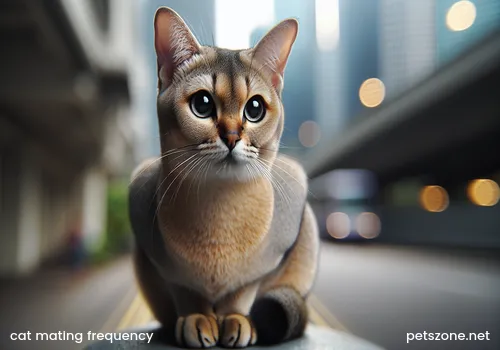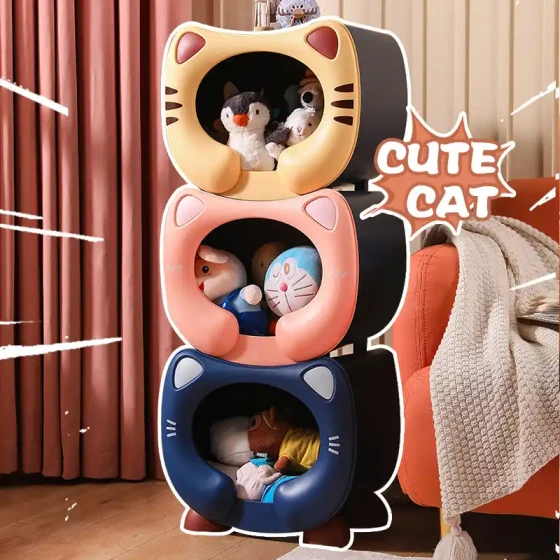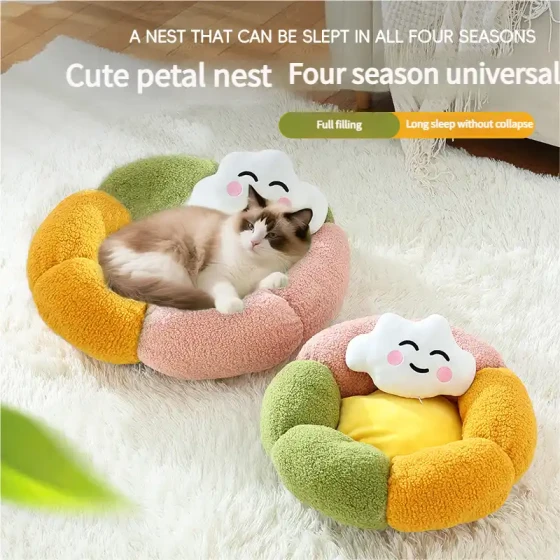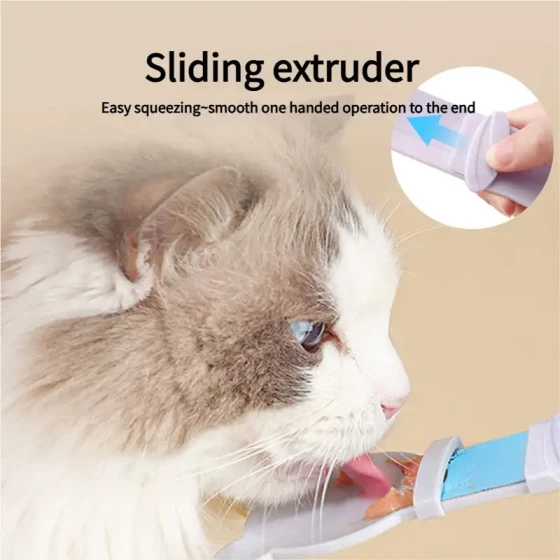Cat Mating Frequency_After Mating Five Times a Day, Is It Necessary to Continue the Next Day
Cat Mating Frequency: After Mating Five Times in One Day, Is It Necessary to Continue the Next Day?
Many cat owners often struggle with the frequency and timing when dealing with their cats' mating issues. Especially after seeing the cat mate multiple times in one day, they wonder if it is necessary to continue arranging mating the next day. Simply put, for female cats in heat, even if they have mated multiple times in one day, it is generally still recommended to continue mating the next day. This helps increase the success rate because cats are induced ovulators, and multiple matings can better stimulate ovulation.

To better understand this issue, we first need to understand the reproductive physiology of cats, especially the heat cycle and ovulation mechanism of female cats.
Understanding the Female Cat's Heat Cycle
The female cat's heat cycle is an important reproductive window, usually lasting several days to a week, but it can vary depending on individual differences, breed, environment, and season. During heat, female cats exhibit a series of obvious behaviors, such as:
- Louder and more frequent vocalizations: The calls become very piercing, similar to a baby's cry.
- Rolling on the ground: Rubbing the body to release scent.
- Rubbing against people or furniture: Also to leave scent marks.
- Arching the back and raising the hips: Especially obvious when being petted, this is the posture accepting mating.
- Appetite may decrease, and activity increases.
The heat period is the only time the female cat accepts mating from the male cat.
The Special Feature of Cats: Induced Ovulation
Unlike humans or dogs, cats are "induced ovulators." This means female cats do not ovulate automatically at a fixed time during heat, but ovulation is triggered by the stimulation of mating behavior. Each successful mating stimulates the female cat’s reproductive tract; this stimulation signal is ultimately transmitted to the brain, prompting the pituitary gland to release luteinizing hormone (LH), thereby inducing ovulation.
Because of this induced ovulation characteristic, a single mating may not be enough to cause ovulation, or even if ovulation occurs, the number of released eggs may be limited. Therefore, mating multiple times during the female cat's heat can better accumulate stimulation signals, increase the probability and quantity of ovulation, and thus significantly increase the chance of conception.
Why Is It Recommended to Continue the Next Day After Multiple Matings in One Day?
Similar to the saying "good things are worth waiting for" or "multiple approaches," although mating multiple times in one day helps stimulate ovulation, the ovulation process is not instantaneous, and the female cat’s heat usually lasts several days. After the eggs are released, they need to wait for fertilization in the fallopian tubes. The survival time of sperm in the female reproductive tract is also limited.
Therefore, even if multiple matings occurred on the first day, it is still necessary to arrange mating sessions the next day:
- Maximize ovulation chances: Continuous stimulation over multiple days ensures sufficient ovulation induction during the female cat's heat peak, not missing the best opportunity for conception.
- Ensure sperm vitality and quantity: Supplying fresh sperm daily increases the probability of fertilization with eggs.
- Accommodate individual differences: Each female cat's response to mating stimulation varies; some may require more stimulation to successfully ovulate.
- Increase fertilization opportunities: Multiple matings mean more sperm entering the reproductive tract, increasing chances of sperm and egg meeting and successfully combining—what we commonly call "luck," but increasing the number increases the chance of good luck.
Therefore, even after mating five times on day one, as long as the female cat is still in heat and willing to mate on the second day, and the male cat shows normal mating behavior, continuing mating is a wise choice. Usually, it is recommended to arrange mating continuously for 1-3 days during the peak of the female cat’s heat (typically days 2-4 after heat begins), with 2-4 sessions per day or even more, adjusting frequency based on the cat’s stamina and willingness. Mating five times a day sounds high, but if the cat is in good condition, it is not impossible. The key is to observe the cat’s state, rather than rigidly following a number.
Observing the Cat’s State Is Key
Although multiple and consecutive matings help improve success rates, owners should closely monitor the cat’s condition.
- Observe the female cat: If she still shows obvious signs of heat the next day and is willing to accept the male cat approaching and mating posture, it indicates she is still reproductively receptive and mating can continue. If she shows rejection or aggression toward the male cat, or her heat symptoms weaken or disappear, it may indicate she has ovulated or the heat period is ending. Forcing mating at this time not only reduces success rate but may cause stress and discomfort.
- Observe the male cat: The male also needs rest and recovery. If the male appears tired, loses interest, or mating behavior becomes less active and effective, he should rest. Excessive fatigue affects sperm quality and vitality.
Create a Comfortable Mating Environment
To improve mating success and efficiency, providing a quiet, safe, and disturbance-free environment for the cats is very important. Ensure the cats feel relaxed and comfortable during mating.
Frequently Asked Questions
- How to tell if the cat has mated successfully? Within days to weeks after mating, the female cat’s heat symptoms gradually subside. If the mating is successful, pregnancy signs may appear around 3 weeks later, such as nipples turning pink and enlarging (called "pinking up"), weight gain, and abdomen gradually swelling. The most accurate method is a veterinary palpation or ultrasound about 3 weeks post mating.
- Does every heat cycle result in pregnancy? Not necessarily. Heat provides the physiological condition for conception, but successful mating, ovulation, fertilization, and embryo implantation must all proceed smoothly to achieve pregnancy.
- Do male cats need to mate frequently? Healthy, mature males usually show strong mating desire during the female’s heat. Excessively frequent or prolonged mating can cause fatigue and affect sperm quality. Therefore, reasonable scheduling and rest for the male are also important.
Summary
Returning to the original question, after mating five times in one day, should mating continue the next day? The answer is yes, it is generally recommended to continue. This is based on the physiological characteristics of induced ovulation in cats and maximizing conception chances. However, everything should be premised on the cat’s health and willingness. Carefully observing the cat’s behavior and condition, and providing a safe and comfortable environment, is the key to ensuring smooth mating and improving success rates. If you have any questions or concerns about cat reproduction, it is best to consult a professional veterinarian for more specific advice.



